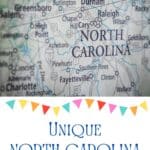Visiting the James K. Polk State Historic Site: History, Cabins, and a Walk Through Time
Visiting the James K. Polk State Historic Site has been on my list since we moved here. We recently had a friend from the UK stay with us for a few days and it felt like the perfect time to explore. You know I can never resist a good mix of history and hands-on exploration and this site has both. The museum doesn’t disappoint — it’s small, approachable, and yet it tells the story of one of the most consequential U.S. presidents you never think about: James Knox Polk.
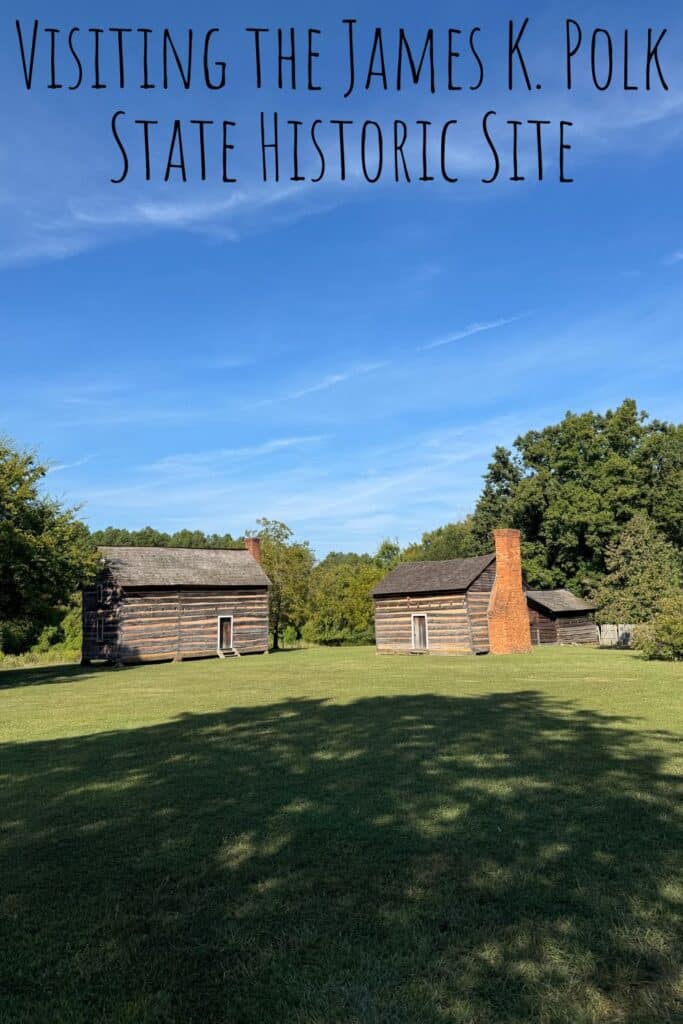
A Brief History of James K. Polk
James K. Polk was born in 1795 in a modest log cabin on land that his family farmed in what is now Pineville, North Carolina. He was the eldest of ten children, and his parents were part of a wave of Scots-Irish settlers who moved through the Piedmont area of North Carolina in the late 1700s, looking for land and opportunity. By the time Polk was eleven, the family had moved west to Tennessee, which was very much the American frontier at the time.
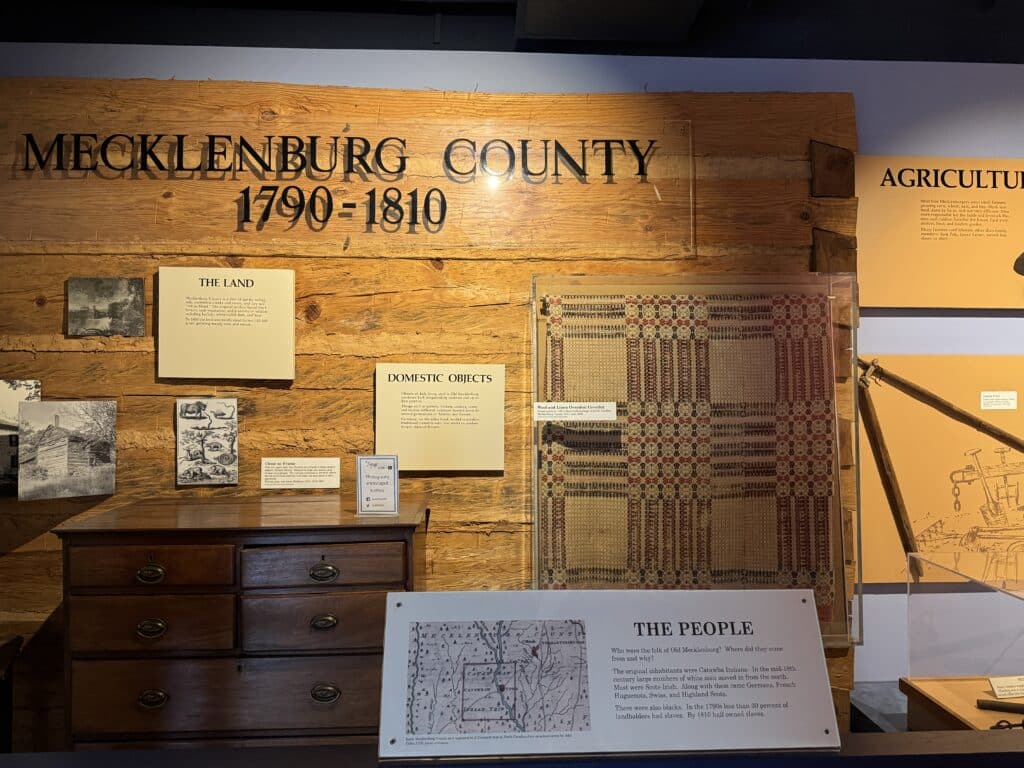
Polk’s childhood health was fragile (he underwent surgery for bladder stones without anesthesia — and yes, you read that correctly), but he grew into a serious, determined young man. He graduated from the University of North Carolina, became a lawyer, and entered politics. Aligning himself with Andrew Jackson, Polk built a reputation as “Young Hickory,” a nod to Jackson’s “Old Hickory” nickname.
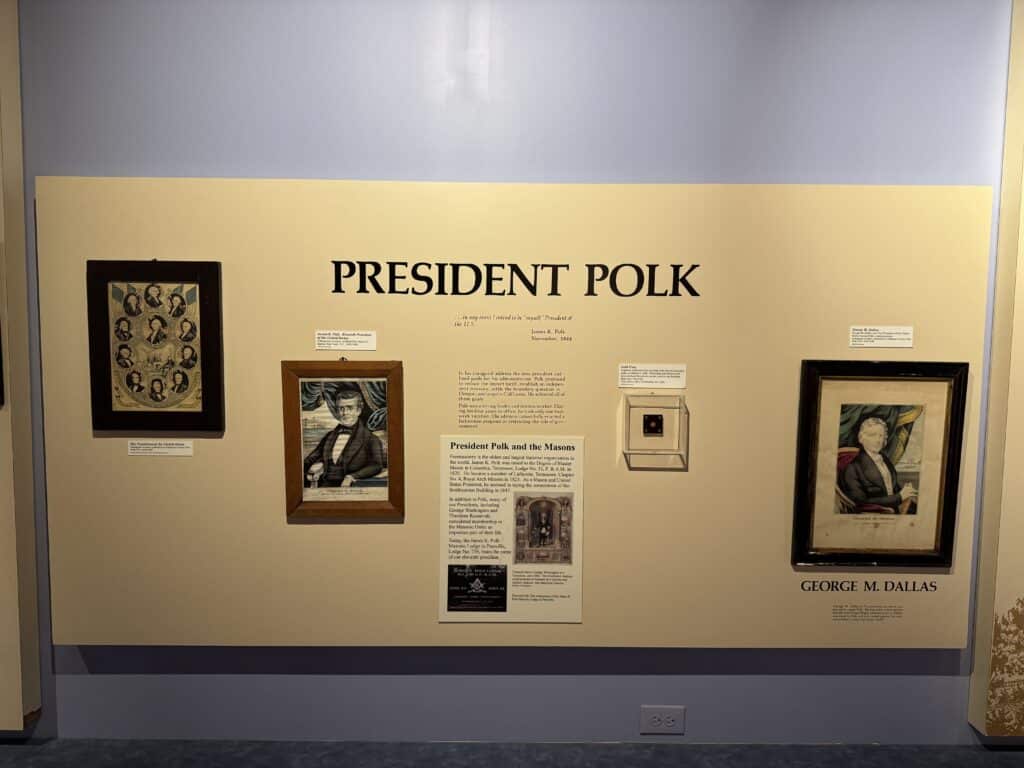
When he was elected as the 11th President of the United States (1845–1849), Polk was considered a dark horse candidate. But he was a man of promises — and unusually for a politician, he kept them. In just four years, he managed to:
- Bring Texas into the Union.
- Negotiate the Oregon boundary with Britain.
- Win the Mexican-American War, which resulted in the U.S. acquiring vast new territories (California, Arizona, New Mexico, and more).
- Establish an independent treasury system.
- Lower tariffs through the Walker Tariff.
Polk had promised to serve just one term, and he stuck to it. Sadly, he didn’t live long afterward — he died of cholera just 103 days after leaving office in 1849.
Love him or criticize him, Polk shaped the map of the modern United States more than almost any other president.
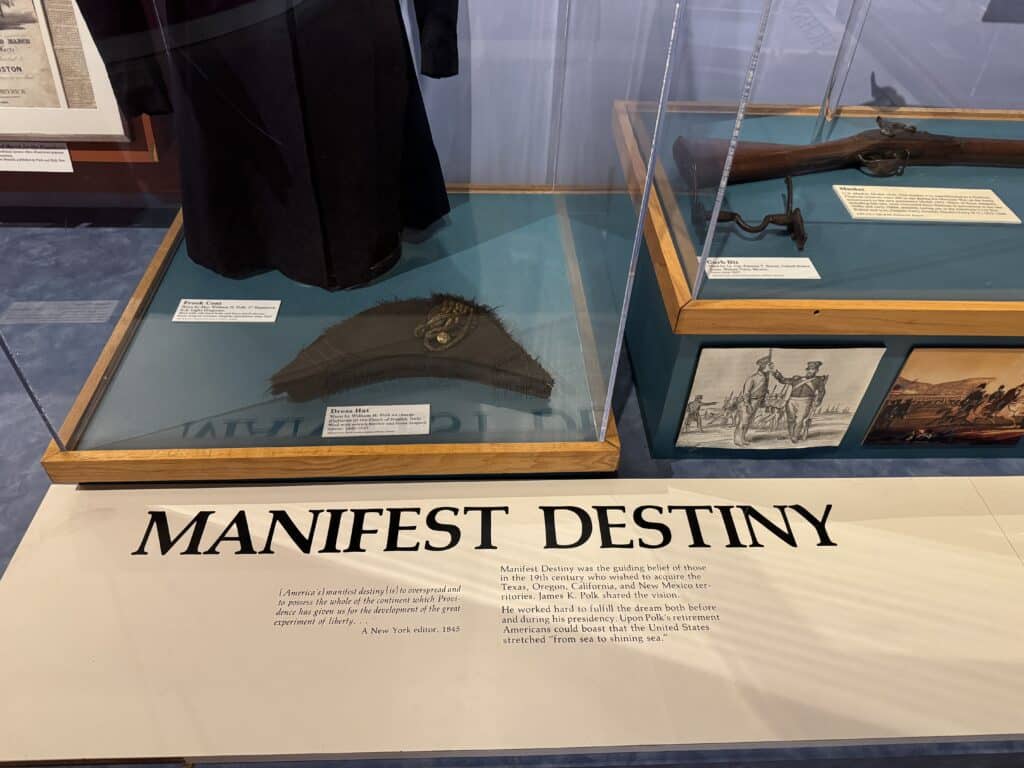
First Impressions at the Site
The President James K. Polk State Historic Site sits quietly on a patch of land tucked away from busy Charlotte. You’d hardly expect it — there’s shopping nearby, and modern neighborhoods surround it — but once you step onto the grounds, the hum of traffic fades and you’re transported to the early 1800s. It is also an entrance to the Sugar Creek Greenway, so plan on a nice walk after your visit.
The visitor center is your first stop. Inside you’ll find exhibits about what everyday life was like in North Carolina at the time, the politics surrounding him, and his presidential accomplishments. There’s also a short film that plays at the top of every hour, which is a great way to get oriented before heading outside.
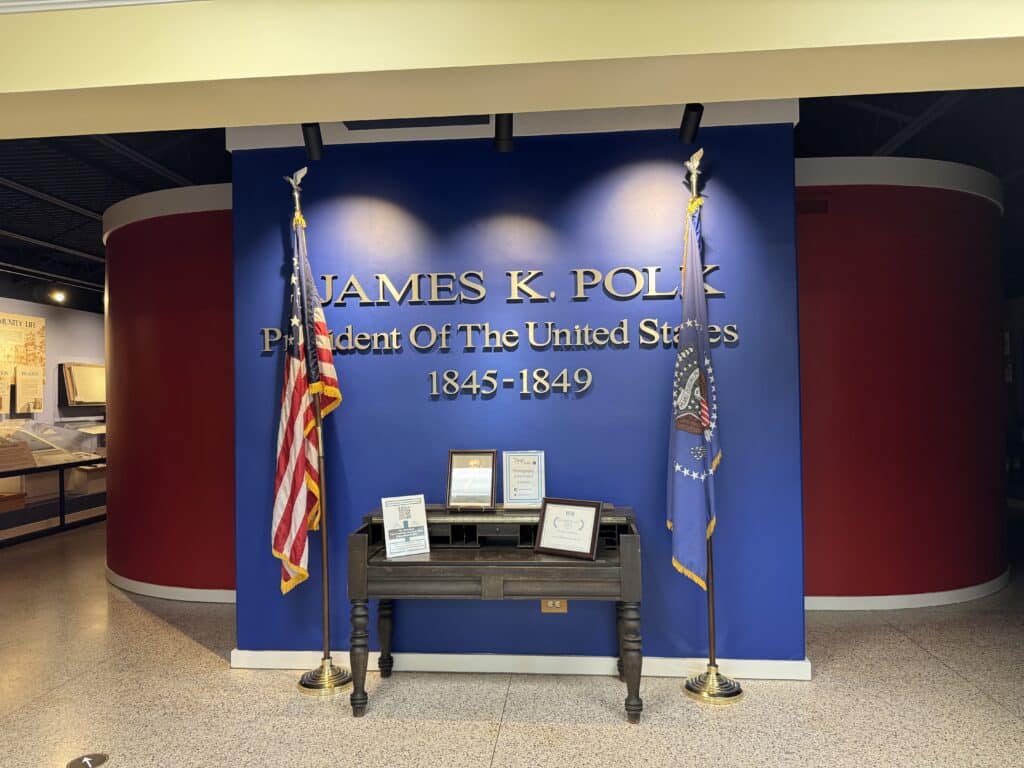
The site is free to visit, though there’s a small charge if you want to take the guided cabin tour.
The Cabins and Grounds
Since Polk’s actual birth cabin no longer exists, the site has reconstructed log buildings based on period architecture: a main house, separate kitchen, and a barn. The cabins are furnished with authentic 19th-century pieces, giving you a sense of what daily life might have looked like for the Polks. They aren’t always open (they weren’t when we were there–I need to go back!), but the grounds are lovely. The kitchen garden is impressive as well.
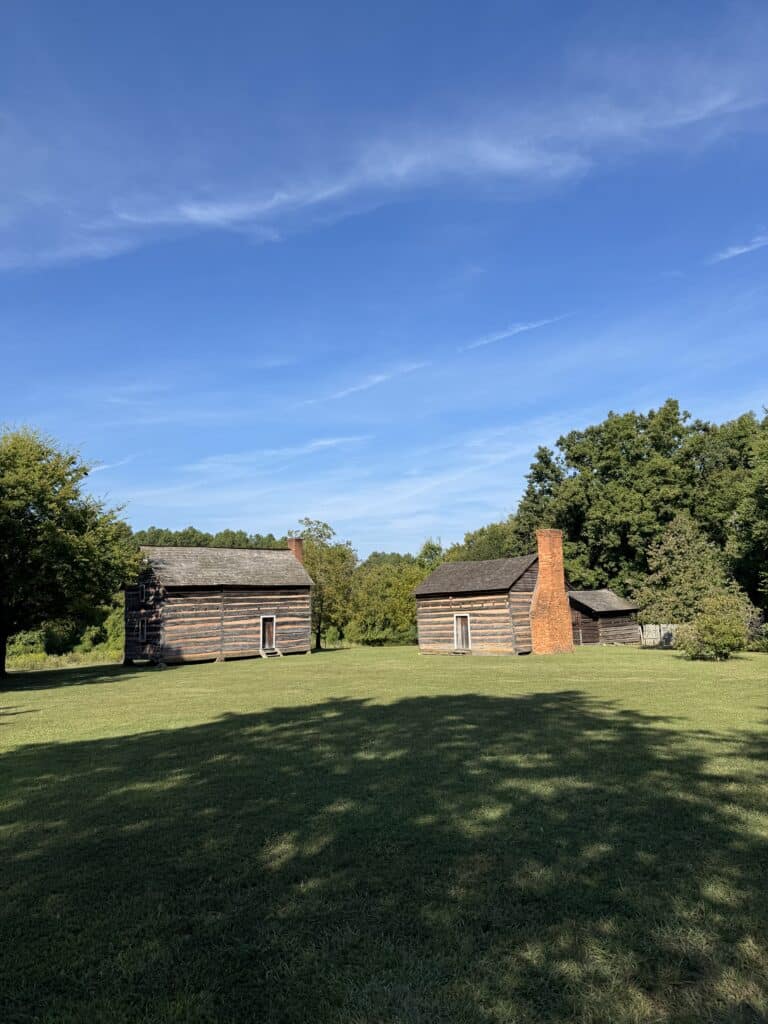
Tours and Practical Details
The guided tours are offered on Thursdays, Fridays, and Saturdays at 10:00 am, noon, and 2:00 pm. Tickets are just a few dollars — adults pay around $4, while kids and seniors get discounts. It’s an affordable outing for families, and the interpreters do a wonderful job of bringing history to life.
Here are a few practical tips if you’re planning a visit:
- Check the schedule: The site is open Tuesday through Saturday, 9:00 am to 5:00 pm. It’s closed on Sundays, Mondays, and most holidays.
- Wear comfortable shoes: You’ll be walking between cabins and through outdoor spaces. It’s not a large site, but there aren’t paths in the cabin area.
- Plan ahead: The tours can fill up, so consider calling ahead if you’re visiting with a group.
- Give yourself time: Between the film, exhibits, and exploring the grounds, you’ll want at least an hour and a half.
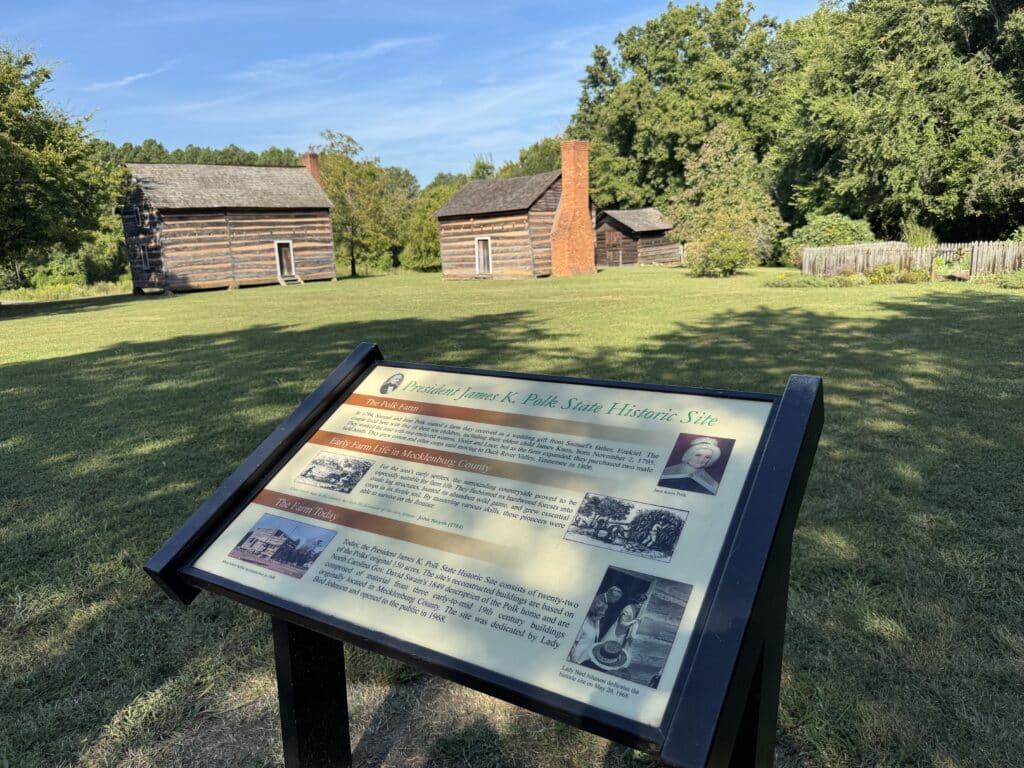
Why Visit?
Polk isn’t a name most Americans think of, but he had a large impact on the country as it is today. It is a humble site and an almost hidden gem in Charlotte
The museum doesn’t shy away from the complicated parts of Polk’s legacy, which I appreciate. His expansionist policies raised difficult questions about slavery, Native American lands, and the balance of power in Congress both at the time and especially now. Visiting gives you a chance to reflect on those complexities while living with the end result.
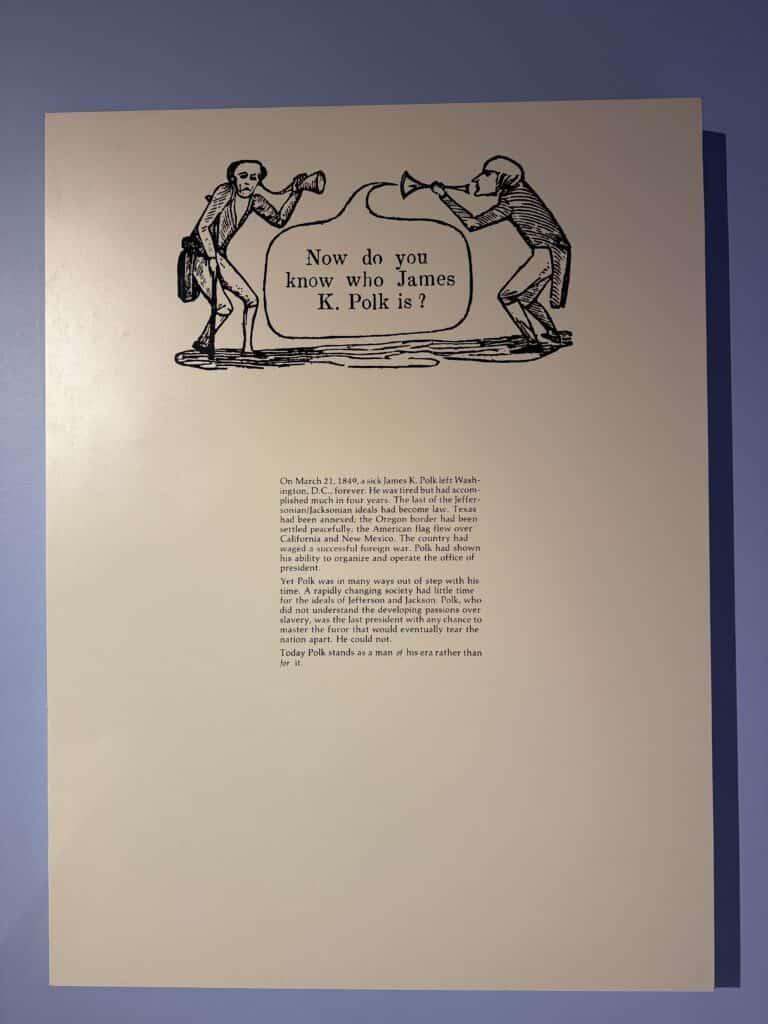
The President James K. Polk State Historic Site might not be as flashy as Mount Vernon or Monticello, but that’s exactly its charm. It’s small, approachable, and filled with a sense of place. You walk away not just with facts about a president, but with a feeling for the world he came from.
If you find yourself in Charlotte, take the time to visit. It’s history you can step into — and you’ll leave with a deeper appreciation for how humble beginnings can lead to extraordinary legacies.





